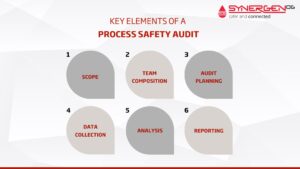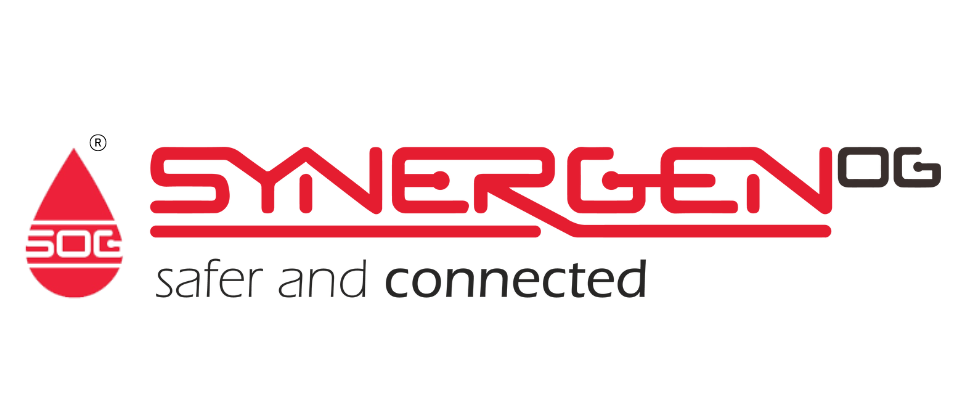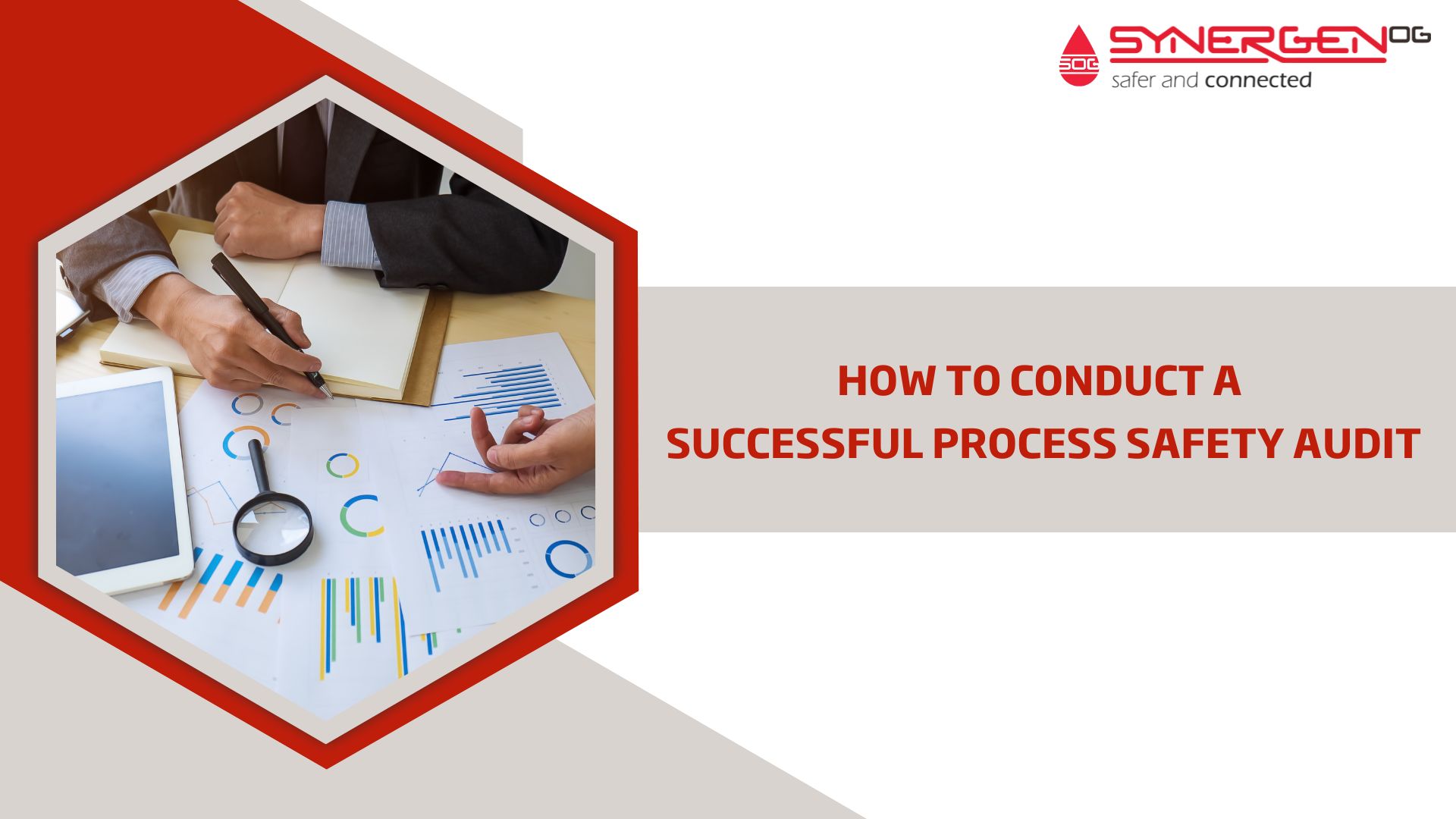To ensure a secure and dependable manner for hazardous processes and operations in an organisation, the organisation must prioritise process safety. Conducting a process safety audit is a fundamental aspect of process safety management. It helps identify potential hazards and risks associated with the processes and evaluates the effectiveness of the safety management system in controlling those risks.
In this article, we will discuss how to conduct a successful process safety audit and what to look for.
What is a Process Safety Audit?
A process safety audit is a comprehensive assessment of an organisation’s safety management system that ensures it meets relevant safety standards and regulations.
The organisation must conduct this audit to maintain and enhance the safety of its operations, personnel, and environment. By identifying and assessing risks, organisations can implement measures to control or mitigate them, preventing catastrophic incidents from occurring.
Also Read: Importance of Addressing Hazards in Process Safety
Importance of Process Safety Audit
A well-trained team of auditors who understand the principles of process safety management audits and have access to the right process safety audit tools is essential to conduct a successful process safety audit. The audit team can evaluate the effectiveness of the organisation’s psm system and identify any gaps that need to be addressed.
Process safety audit training is crucial to ensure auditors have the necessary skills and knowledge to conduct a thorough and effective audit. Training should cover process safety management principles, audit methodology, and the use of process safety audit tools.
Investing in process safety management audits, process safety audit tools, and process safety audit training can improve an organisation’s safety performance and reduce the risk of incidents or accidents.
The Key Elements of a Successful Process Safety Audit

Scope: Define the scope of the process safety audit to cover all relevant safety management systems, procedures, and practices. In order to ensure that all essential areas are examined, the audit team and the management of the organization must come to a mutual agreement regarding the scope of the audit. The audit should review the organisation’s safety policies, procedures, training, and emergency response plans.
Team Composition: To ensure a comprehensive process safety audit, it is essential that the audit team consists of competent and experienced auditors who possess a thorough understanding of relevant safety standards and regulations.
It is recommended that the team includes subject matter experts who have experience in the organisation’s processes and operations, in order to provide a diverse perspective and ensure that all aspects of the audit are thoroughly examined.
Audit Planning: Prepare a well-structured audit plan to outline the audit scope, objectives, and methodology, including the data to be collected and the team’s roles and responsibilities. Communicate the audit plan to the organisation’s management before the audit begins.
Data Collection: Collect relevant data, including documentation, interviews, and observations, to evaluate the safety management system’s effectiveness. Ensure the data collected is accurate, complete, and objective, and analyse it against relevant safety regulations and standards.
Analysis: Analyse the collected data to identify potential hazards and risks, and evaluate the safety management system’s effectiveness in controlling those hazards and risks.
Compare the data collected against relevant safety regulations and standards to identify any gaps or weaknesses in the safety management system. Conduct a thorough, objective, and impartial analysis.
Reporting: Provide a clear and concise summary of the audit findings in the report, including recommendations for improvement. Identify the strengths and weaknesses of the safety management system and provide practical, achievable, and prioritised recommendations for improvement.
Communicate the report to the management and implement the recommendations promptly.
Implementing the recommendations can improve the safety management system’s effectiveness and ensure safe and reliable operations.
How to Prepare For A Process Safety Audit
Plan the Audit: Organisations must plan for the process safety audit in advance to ensure they have all necessary measures in place. This involves identifying the audit scope, assembling an audit team, preparing audit checklists, and identifying relevant documentation for review.
Communication: To prepare for a process safety audit, effective communication is crucial. Organisations should communicate the audit objectives and scope to relevant stakeholders, including employees, contractors, and regulatory authorities. This ensures that everyone is aware of the audit and their roles in facilitating a successful audit.
Documentation: It is important for organisations to maintain accurate and up-to-date documentation of their safety management systems, including policies, procedures, training materials, and incident reports. This documentation must be readily accessible to the audit team, who will evaluate the effectiveness of the safety management system.
Conducting the Audit
To ensure an objective and impartial audit, the audit team must follow a well-defined process that includes:
Opening Meeting
The audit team will hold an opening meeting with the organisation’s management to discuss the audit scope, objectives, and methodology.
Onsite Audit
The audit team can conduct an onsite audit to evaluate the effectiveness of the organisation’s safety management system. This includes collecting data, conducting interviews, and reviewing documentation.
Closing Meeting
The audit team holds a closing meeting with the organisation’s management to discuss the audit findings and recommendations for improvement.
Reporting and Follow-up
The audit team is responsible for preparing a detailed audit report that summarises the audit findings, highlighting any areas of non-compliance or potential for improvement. The team must share the report with relevant stakeholders, including the organisation’s management, safety personnel, and regulatory authorities.
Furthermore, the audit team must follow up with the organisation to ensure that all recommended improvements are implemented effectively. This can include reviewing documentation, conducting interviews, and evaluating safety performance data. By following up on the audit findings, organisations can ensure that the safety management system continues to improve and the audit process remains effective.
Importance of Continuous Improvement
Maintaining an effective process safety management system relies heavily on continuous improvement. Organisations can benefit from viewing process safety audits as an opportunity to identify areas for improvement and implement changes that can enhance safety performance continuously.
By adopting a culture of continuous improvement, organisations can maintain their safety performance and prevent accidents and incidents.
Use of Technology
Technology can support the process safety audit process, including audit planning, data collection, and analysis. For example, audit checklists can be digitised and accessed through mobile devices, making data collection more efficient and accurate.
Safety management systems can also be integrated with real-time monitoring and reporting systems, enabling organisations to identify potential hazards and respond quickly.
Technology can also support data analysis, allowing organisations to identify trends and patterns in safety performance data. This can enable organisations to make data-driven decisions and prioritise areas for improvement. By adopting technology in the safety audit process, organisations can enhance the effectiveness of their safety management systems and prevent accidents and incidents.
Case Studies:
The following case studies are used to illustrate the impact of a successful process safety audit.
BP Texas City Refinery: How a Process Safety Audit Reduced Safety Incidents by 92%
In 2005, an explosion occurred at the BP Texas City Refinery, resulting in 15 deaths and injuring over 170 others. Following the incident, the U.S. Chemical Safety and Hazard Investigation Board (CSB) conducted a process safety audit and identified several areas for improvement in BP’s safety management system.
The audit team recommended that BP implement a process safety management program that would address hazards systematically, perform regular safety audits, and provide effective training to all employees. BP implemented several changes, including increasing the number of safety personnel, implementing a new process safety management program, and improving operator training. The company also conducted regular process safety audits to monitor and improve safety performance continually.
The process safety audit and subsequent improvements resulted in a significant reduction in safety incidents at the BP Texas City Refinery. In 2018, BP reported a 92% reduction in process safety incidents and a 60% reduction in safety incidents overall.
Shell Deer Park Refinery: How a Safety Culture Program Improved Safety Performance by 57%
In 2013, Shell Deer Park Refinery in Texas underwent a process safety audit and identified several areas for improvement in its safety management system. The audit team recommended that Shell implement a safety culture program that would focus on improving safety performance by promoting safety as a core value throughout the organisation.
Shell implemented several changes, including enhancing safety leadership, providing additional safety training for employees, and conducting regular safety audits. The company also implemented a safety observation program, which enabled employees to report safety hazards and incidents proactively.
The process safety audit and subsequent improvements resulted in a significant improvement in safety performance at the Shell Deer Park Refinery. In 2018, the refinery reported zero process safety incidents and a 57% reduction in safety incidents overall.
Conclusion
Conducting process safety audits is essential to guarantee safe and dependable operations within organisations. By following a well-planned approach, organisations can successfully conduct process safety audits and identify areas for improvement. Process safety audits can improve safety performance, reduce incidents and accidents, and enhance regulatory compliance, among other benefits.


[…] Read more on Process Safety Audits – https://synergenog.com/process-safety-audit/ […]
[…] Read more on process safety audits – https://synergenog.com/process-safety-audit/ […]